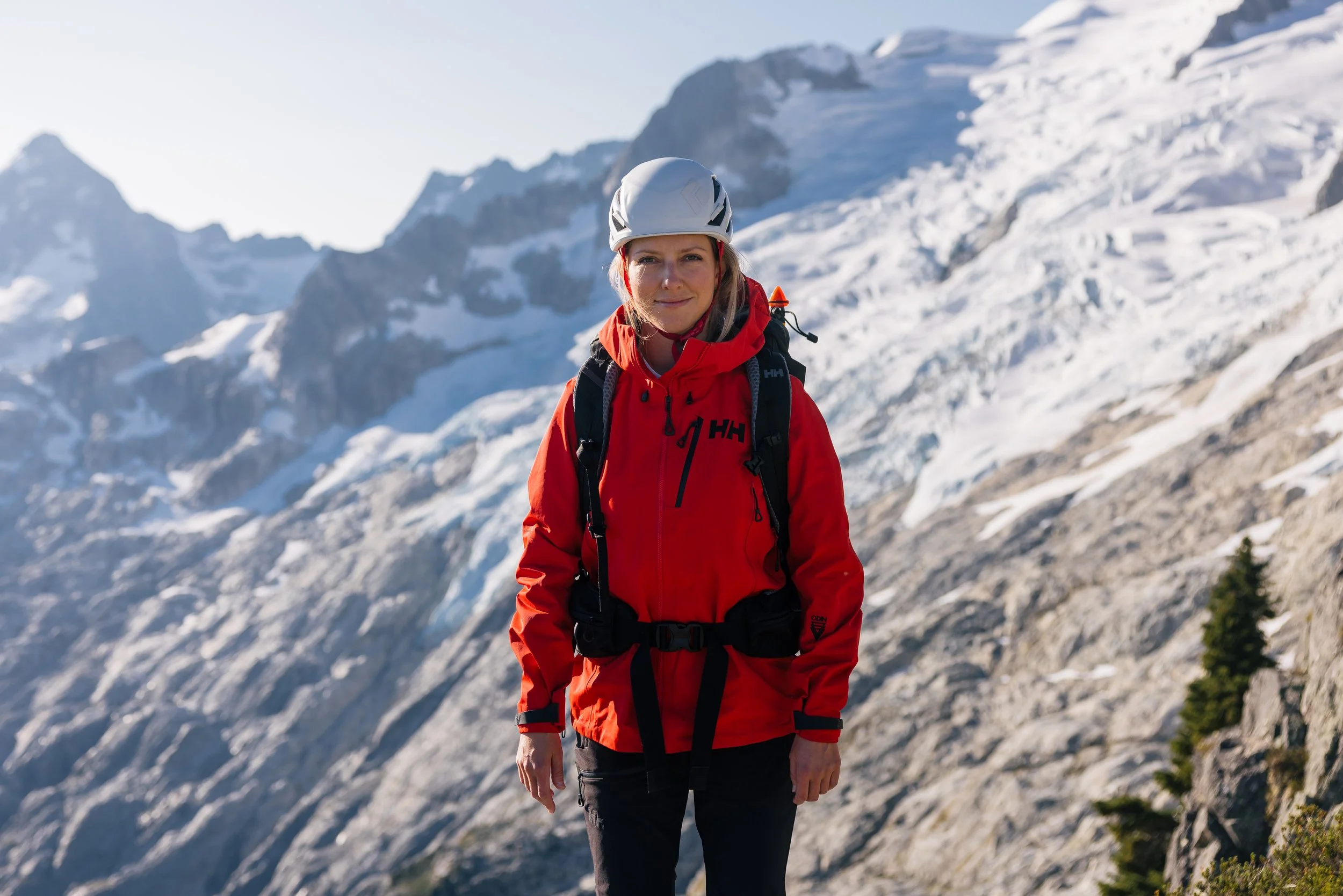Get in touch with me - I’d love to hear from you about commissions or other opportunities.
Email: mloevenmark@gmail.com
Monika is an environmental artist based on the west coast of British Columbia with an insatiable curiosity about the ecosystems that support our world.
Growing up on a boat on Vancouver Island, and later calling the Coastal mountains home, her work makes evident her wide variety of environmental interests from the health of juvenile salmon, the systems of watersheds, to the significance of melting glaciers and her backyard songbird species.
Monika is a Creative Ambassador for Protect Our Winters Canada, a member of Artists for Conservation and the Federation of Canadian Artists, and has shown her work in solo and group shows in Canada, the US, Sweden and England. She has volunteered with Squamish Search and Rescue, Mountain Mentors, Climb & Conquer, Seymour Salmonid Society, North Shore Black Bear Society and more.
My work is inspired by time on the ocean, in the mountains and the ships and helicopters that provide scientific access to remote research locations.
EDUCATION
Central Saint Martins, BA Honours Visual Arts, 2010, England
Emily Carr University of Art & Design, Bachelor of Fine Arts, 2011, Canada
University of Reykjavik, Renewable Energy Thesis, 2015, Iceland
University of British Columbia, 2016, Bachelor of Environmental Design in Architecture, 2016, Canada
Top photo: Chelsea II, our floating home anchored in the Gulf Islands of British Columbia
Lower photo: My twin sister and I as boat kids
My Story
I grew up on a wooden boat on the coast of Vancouver Island in the 90’s that still makes me nostalgic for the smell of teak varnish. When my twin sister and I were little, around age 3 or 4, we discovered the magic of the watery world under the dock where our boat was moored. I remember asking for a small net so we could catch little needle fish and minnows, and marvelling at their sheen and shimmer as they darted away from us. We’d spend weekends and summers in the Gulf Islands, taking the zodiac ashore and playing in the intertidal zone. We flipped over every rock on the beaches, peering under to locate small crabs, and gathered leaves and shells of various colours to grind down into the little potholes of the sandstone boulders to create paint pots. When it got too hot on those summer days, we’d swim around the rocky shoals, fascinated by how one rock could foster an entire ecosystem of seaweeds and kelp, crabs and fish, and our all-time favourite, sea anemones that didn’t love to be poked as much as we loved poking them.
Something happens to you when you spend so time on the ocean – you become a part of it, and it’s a process that can’t ever be undone. As a kid playing in tide pools, I became an advocate for the environment. My revelation towards conservation came in 2017 at the age of 29 when I began working for the regional government as a Forest Worker in the mountainous watersheds of North Vancouver. Huge areas of the watersheds are closed to the public, as they are catchment basins for rainwater and snowmelt that is collected in large reservoirs and become the Greater Vancouver public’s drinking water. One of the reservoirs began as a river before a 100’ dam was built between narrow cliffs, creating a high-mortality zone for the salmon and trout out-migrating to the ocean. As staff, we had the responsibility of trapping as many juvenile coho salmon and steelhead trout as possible and driving them in a tank around the dam to be released into the river below. Before we let the fish go, we recorded data – the species, size, quantity, and if the fish was a hybrid of two species, etc. I learned to identify the small juvenile salmon quickly and gained a deeper appreciation for the struggles they were facing in a landscape that is very much ‘managed’ by humans. With every intervention in the landscape, even necessary interventions with the best intentions - like driving fish around a dam that will kill them - we interrupt their natural life cycle. It was during that particular summer that I realized how important it is that the public are given the right information about what nature needs from us in order to be able to continue offering us the ecosystem services we so heavily, and mostly unknowingly, rely on. This is where I became highly aware that scientific communication is an essential part of the process of environmental conservation, though I hadn’t yet learned the term at the time. Now I know that scientific communication means creating visuals that spark interest and engagement in dense scientific information.
As I have followed my curiosity and care for the natural world towards opportunities volunteering with remote research stations and collaborating with environmental scientists, I have honed a method of working with the professionals in the field that takes an accumulation of data and transforms it into a powerful visual that allows broader audiences to understand, and therefore, become involved in the protection of their environment. My life purpose through my work is to foster environmental stewardship by creating engaging scientific visuals, because,
“In the end, we will conserve only what we love, we will love only what we understand, and we will understand only what we are taught.”
- Baba Dioum, a Senegalese forestry engineer.











